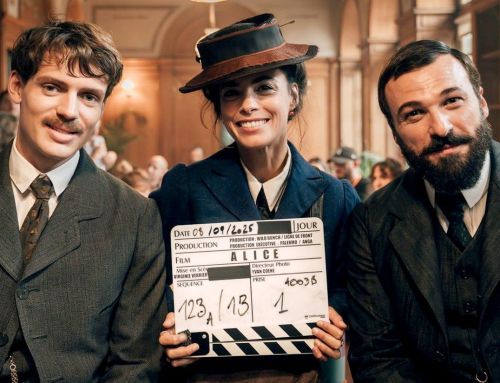“Woman walks ahead” | Ahead of history: a conversation with Susanna White
The film “Woman Walks Ahead” opens this weekend but I was fortunate enough to see it at the Tribeca Festival. It is an honor to finally review it and therefore close out my festival coverage by indeed saving the best for last. Like many films this year it was directed by a woman and judging by the response of the audiences, it’s proof that female directors are certainly on an even playing field with their male counterparts.
The historic period piece is an informative and charming look at the American West as seen through the lens of director Susanna White. It chronicles the true story of Brooklyn-based artist Catherine Weldon and how she travels to North Dakota in the late nineteenth century in hopes of painting a portrait of the infamous Indian warrior Sitting Bull. Upon her arrival she quickly learns there’s more to life than just art.
Portraying Weldon, in probably her best performance since her Oscar-nominated turn in “Zero Dark Thirty” (also directed by a woman) is Jessica Chastain. The film also stars Michael Greyeyes (“Fear of the Walking Dead”) as the legendary Sioux chief and recent Oscar winner Sam Rockwell (“Three Billboards Outside Ebbing, Missouri”) as friendly soldier “Silas Groves.” White was generous enough to talk to me about her cast, her directing and her take on women in film.
White is of course no stranger to period pieces, having been nominated for an Emmy for directing the mini-series “Jane Eyre.” When asked what her attraction is to stories from the past, the British-born White claimed, “I grew up in a country where you’re surrounded by history.” As to what attracted her to American history, “I always saw America as a young country but after being invited to an Indian reservation I witnessed a traditional rain dance and had such an ancient sense of place with the people who have been here for thousands of years.”
Ironically, being from England allowed White to bring a fresh approach to the era without the preconceived notions often portrayed by John Wayne or John Ford films. One of which was her display of violence which in traditional Westerns is normally taken out on sheriffs, bank robbers and town drunks. Paradoxically, White focuses most of the aggression on Weldon whose presence and aspirations contradict the agenda of the local military. Speaking of which, kudos to Chastain for allowing herself to be put through such hardships which result in many unflattering situations and appearances.
The film was shot in New Mexico, but White’s preparation included spending time in the Dakotas and speaking with tribal elders. She also credits screenwriter Steven Knight for his research. “The script portrays Sitting Bull as a very sophisticated, clever guy with a sense of humor and deep, spiritual wisdom.” She added that Weldon was “ahead of her time and an amazing campaigner who stood up for what she thought was right.”
It’s doubtful a story like this would have been made a decade ago, but in our current climate, female-driven pieces are now more acceptable. According to White “It’s found its moment.” She went on to thank twenty-six year-old Erika Olde with producing and financing the film through her company Black Bicycle Entertainment.
Special credit should be given to White and her cinematographer Mike Eley for achieving the rustic Earth-tones that define western landscapes. At times is seems as though the actors are jumping out of a Frederick Remington painting. Aiding to the look of the film are great costumes and production design, the challenge of the latter being to create a look with limited sets. In addition, White’s detail is meticulous, down to the bullet holes on Sitting Bull’s body which he received over the course of his life.
As for the cast, Chastain was at the top of White’s list. “I knew I wanted her because she is so close to Catherine Weldon. I loved her spirit.” As for Rockwell, “He’s a great-layered and brilliant actor.” White gives equal praise to Greyeyes’s performance. Perhaps it’s no coincidence that he himself is of Indian descent, specifically from the Plains Cree nation in Canada.
To the question of whether a period piece is harder to direct than something contemporary, White explained “Not really, to me it’s about story and characters so no matter what time zone a person winds up in they still have the same DNA.” Although she mused that period pieces sometimes take longer because actors have to get into more elaborate outfits.
When asked what the challenge of making a film about real people versus fictitious ones was, White said, “the responsibility of honoring them.” My final question to White was does she prefer the title “Female Director” to just “Director.” Her response, simply, “I’m a director who happens to be female.”
“Woman Walks Ahead” opens in theaters June 29th.







